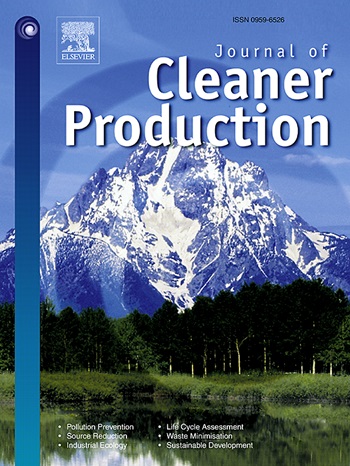“生产-生活-生态”空间视角下的资源环境生态承载力评价——以吉林省西部为例
IF 9.7
1区 环境科学与生态学
Q1 ENGINEERING, ENVIRONMENTAL
引用次数: 0
摘要
近几十年来,中国社会经济的快速发展和资源消耗的不断增加,大大加剧了全国的环境污染和生态退化。区域差异和各要素之间的相互作用增加了解决这些问题的复杂性,这不仅使资源和环境管理具有挑战性,而且需要灵活动态的管理策略来应对多层次、多维度的冲突和不确定性。此外,资源和环境影响的有效管理需要综合许多因素和适应性战略,以应对不断变化的环境条件和不断变化的社会需求。本文从“生产-生活-生态”空间的角度,提出了资源环境承载力的概念框架和评价指标体系。利用该框架对吉林西部地区REECC进行了定量评价,并对其内部驱动因素和气候影响进行了深入分析。并对不同土地利用类型的REECC和重心移动方向进行了评价。2005-2020年该区域REECC的时空变化尤为显著。2005年,REECC在0.4-0.5之间的地区占总面积的47.89%,但2010年下降到37.16%,2015-2020年稳定在41.76%。人口密度是主要影响因子,其次是EVI和PM2.5。降水量与REECC呈显著正相关,气温与REECC呈显著负相关。REECC趋势方向与草原一致,重心位置发生偏移。本文章由计算机程序翻译,如有差异,请以英文原文为准。
Evaluation of resources, environment, and ecological carrying capacity from the perspective of “production-living-ecology” spaces: A case study of western Jilin Province, China
China’s rapid socioeconomic development and increasing consumption of resources has greatly intensified environmental pollution and ecological degradation across the country over recent decades. Regional differences and interactions among various elements enhance the complexity of addressing these issues, which not only makes resource and environmental management challenging, but also requires flexible and dynamic management strategies to cope with multilevel and multidimensional conflicts and uncertainties. Moreover, effective management of resources and environmental impacts requires the integration of numerous factors and adaptative strategies to respond to the continuously changing environmental conditions and evolving societal needs. Here, we introduce a conceptual framework and evaluation index system for resource and environmental carrying capacity (REECC) from "production-living-ecology" spaces(PLES) perspective. We used this framework to quantitatively evaluate REECC in the western Jilin Province and to conduct in-depth analyses of its internal drivers and climate impacts. The REECC and direction of movement of the center of gravity of different land-use types were also assessed. Spatial and temporal changes in REECC in this region over the period of 2005-2020 were particularly striking. In 2005, areas with an REECC between 0.4-0.5 accounted for 47.89% of total areas, but this fell to 37.16% in 2010 before leveling off at 41.76% in 2015–2020. Population density was the primary influencing factor, followed by EVI and PM2.5. Precipitation was significantly positively correlated with REECC, whereas temperature was significantly negatively correlated with REECC. The direction of the REECC trend was found to be consistent with that for grasslands, and the position of the center of gravity was shifted.
求助全文
通过发布文献求助,成功后即可免费获取论文全文。
去求助
来源期刊

Journal of Cleaner Production
环境科学-工程:环境
CiteScore
20.40
自引率
9.00%
发文量
4720
审稿时长
111 days
期刊介绍:
The Journal of Cleaner Production is an international, transdisciplinary journal that addresses and discusses theoretical and practical Cleaner Production, Environmental, and Sustainability issues. It aims to help societies become more sustainable by focusing on the concept of 'Cleaner Production', which aims at preventing waste production and increasing efficiencies in energy, water, resources, and human capital use. The journal serves as a platform for corporations, governments, education institutions, regions, and societies to engage in discussions and research related to Cleaner Production, environmental, and sustainability practices.
 求助内容:
求助内容: 应助结果提醒方式:
应助结果提醒方式:


